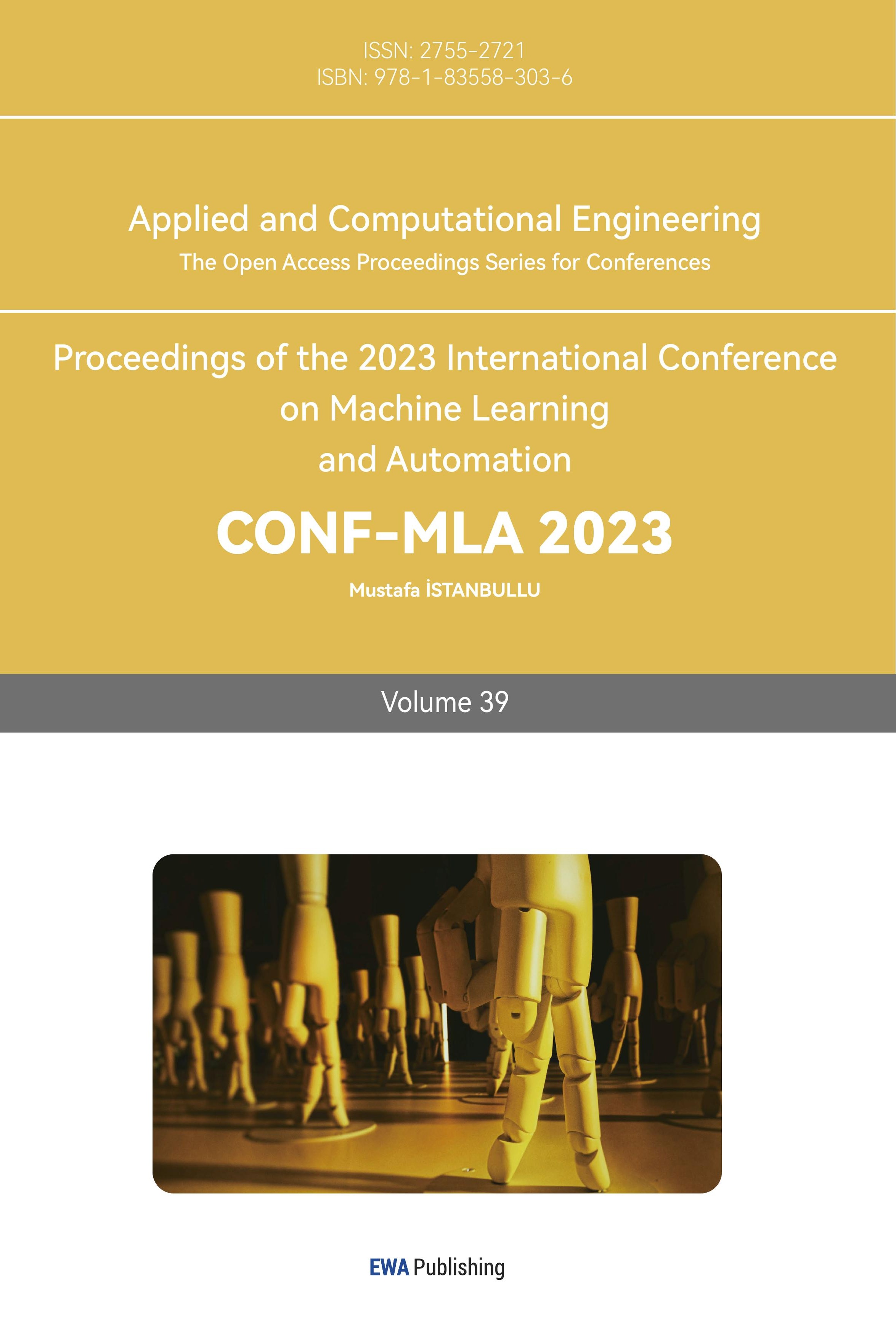References
[1]. Paul, A., & Jeyaraj, R. (2019). Internet of Things: A primer. Human Behavior and Emerging Technologies, 1(1), 37–47.
[2]. Sanjeevi, P., Prasanna, S., Siva Kumar, B., Gunasekaran, G., Alagiri, I., & Vijay Anand, R. (2020). Precision agriculture and farming using Internet of Things based on wireless sensor network. Transactions on Emerging Telecommunications Technologies, 31(12).
[3]. Liu, Y., & Sanjev Dhakal. (2020). Internet of Things technology in mineral remote sensing monitoring. International Journal of Circuit Theory and Applications, 48(12), 2065–2077.
[4]. Vasco Lopes, N. (2020). Internet of Things feasibility for disabled people. Transactions on Emerging Telecommunications Technologies, 31(12), e3906.
[5]. Iranmanesh, S., Raikos, G., Jiang, Z., & Rodriguez-Villegas, E. (2016, June 1). CMOS implementation of a low power absolute value comparator circuit. IEEE Xplore.
[6]. Kumngern, M. (2013). Absolute Value Circuit for Biological Signal Processing Applications. 2013 4th International Conference on Intelligent Systems, Modelling and Simulation.
[7]. Sadeghi, A., Nabiollah Shiri, Mahmood Rafiee, & Rahim Ghayour. (2022). Tolerant and low power subtractor with 4:2 compressor and a new TG‐PTL‐float full adder cell. IET Circuits, Devices & Systems, 16(6), 437–460.
[8]. Hamid Tavakolaee, Gholamreza Ardeshir, & Yasser Baleghi. (2023). Design and analysis of a novel fast adder using logical effort method. Iet Computers and Digital Techniques, 17(3-4), 195–208.
[9]. Olivieri, M., Menichelli, F., & Mastrandrea, A. (2017). Optimal pipeline stage balancing in the presence of large isolated interconnect delay. Electronics Letters, 53(4), 229–231.
[10]. Alioto, M., Consoli, E., & Palumbo, G. (2011). From energy-delay metrics to constraints on the design of digital circuits. International Journal of Circuit Theory and Applications, 40(8), 815–834.
Cite this article
Li,Y. (2024). A 6-bit absolute value detector based on MOSFET and PTL structure. Applied and Computational Engineering,39,209-217.
Data availability
The datasets used and/or analyzed during the current study will be available from the authors upon reasonable request.
Disclaimer/Publisher's Note
The statements, opinions and data contained in all publications are solely those of the individual author(s) and contributor(s) and not of EWA Publishing and/or the editor(s). EWA Publishing and/or the editor(s) disclaim responsibility for any injury to people or property resulting from any ideas, methods, instructions or products referred to in the content.
About volume
Volume title: Proceedings of the 2023 International Conference on Machine Learning and Automation
© 2024 by the author(s). Licensee EWA Publishing, Oxford, UK. This article is an open access article distributed under the terms and
conditions of the Creative Commons Attribution (CC BY) license. Authors who
publish this series agree to the following terms:
1. Authors retain copyright and grant the series right of first publication with the work simultaneously licensed under a Creative Commons
Attribution License that allows others to share the work with an acknowledgment of the work's authorship and initial publication in this
series.
2. Authors are able to enter into separate, additional contractual arrangements for the non-exclusive distribution of the series's published
version of the work (e.g., post it to an institutional repository or publish it in a book), with an acknowledgment of its initial
publication in this series.
3. Authors are permitted and encouraged to post their work online (e.g., in institutional repositories or on their website) prior to and
during the submission process, as it can lead to productive exchanges, as well as earlier and greater citation of published work (See
Open access policy for details).
References
[1]. Paul, A., & Jeyaraj, R. (2019). Internet of Things: A primer. Human Behavior and Emerging Technologies, 1(1), 37–47.
[2]. Sanjeevi, P., Prasanna, S., Siva Kumar, B., Gunasekaran, G., Alagiri, I., & Vijay Anand, R. (2020). Precision agriculture and farming using Internet of Things based on wireless sensor network. Transactions on Emerging Telecommunications Technologies, 31(12).
[3]. Liu, Y., & Sanjev Dhakal. (2020). Internet of Things technology in mineral remote sensing monitoring. International Journal of Circuit Theory and Applications, 48(12), 2065–2077.
[4]. Vasco Lopes, N. (2020). Internet of Things feasibility for disabled people. Transactions on Emerging Telecommunications Technologies, 31(12), e3906.
[5]. Iranmanesh, S., Raikos, G., Jiang, Z., & Rodriguez-Villegas, E. (2016, June 1). CMOS implementation of a low power absolute value comparator circuit. IEEE Xplore.
[6]. Kumngern, M. (2013). Absolute Value Circuit for Biological Signal Processing Applications. 2013 4th International Conference on Intelligent Systems, Modelling and Simulation.
[7]. Sadeghi, A., Nabiollah Shiri, Mahmood Rafiee, & Rahim Ghayour. (2022). Tolerant and low power subtractor with 4:2 compressor and a new TG‐PTL‐float full adder cell. IET Circuits, Devices & Systems, 16(6), 437–460.
[8]. Hamid Tavakolaee, Gholamreza Ardeshir, & Yasser Baleghi. (2023). Design and analysis of a novel fast adder using logical effort method. Iet Computers and Digital Techniques, 17(3-4), 195–208.
[9]. Olivieri, M., Menichelli, F., & Mastrandrea, A. (2017). Optimal pipeline stage balancing in the presence of large isolated interconnect delay. Electronics Letters, 53(4), 229–231.
[10]. Alioto, M., Consoli, E., & Palumbo, G. (2011). From energy-delay metrics to constraints on the design of digital circuits. International Journal of Circuit Theory and Applications, 40(8), 815–834.









